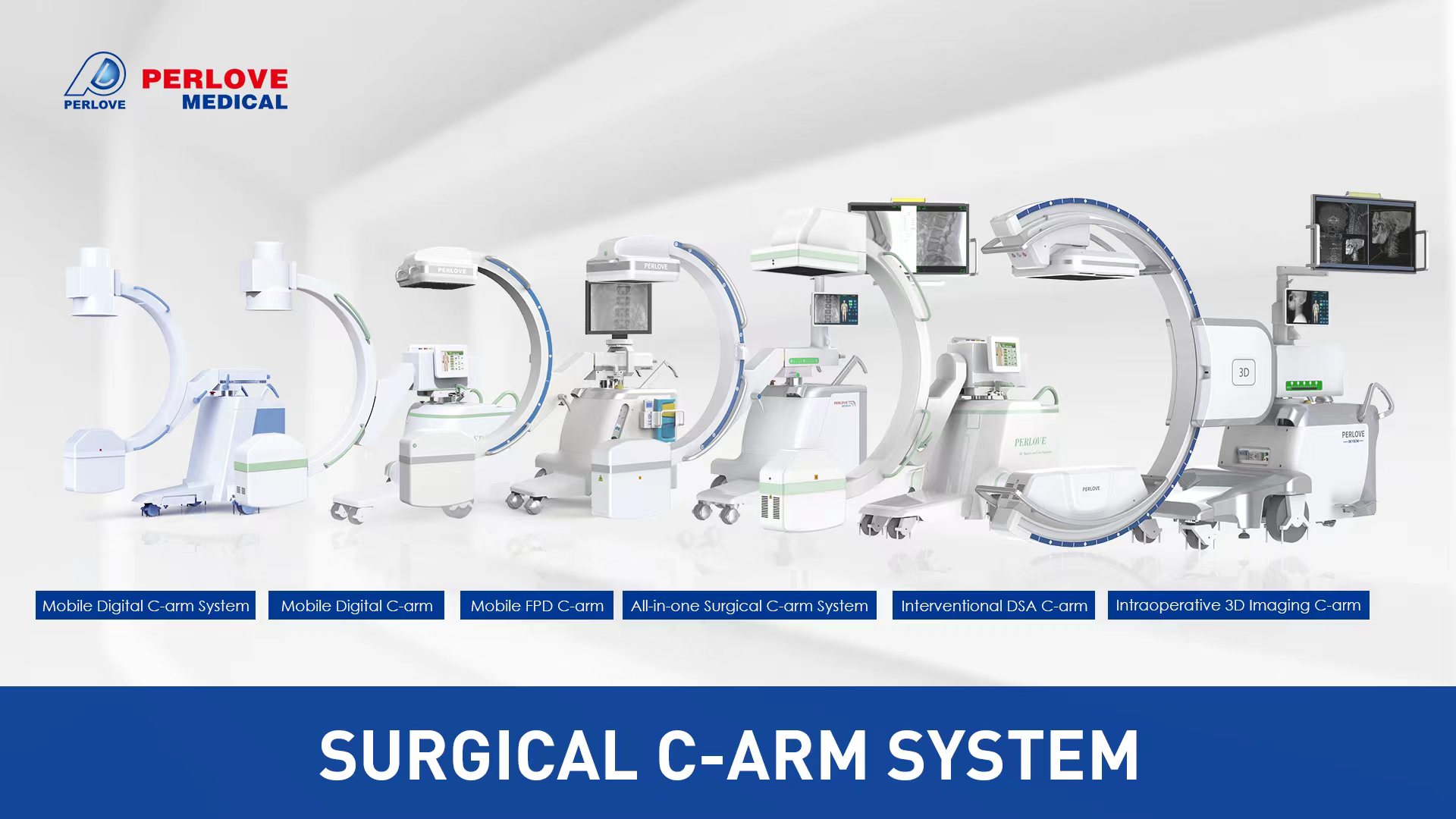No need surgery, bile duct stones can be removed from the mouth – ERCP surgery Medical 007 Interventional Surgery C-arm Helper
The E in ERCP means endoscope, and the Chinese meaning of ERCP is endoscopic retrograde pancreatic cholangiopancreatography. The operation process is a bit like doing a gastroscopy. The doctor inserts the duodenoscope through the mouth to the descending part of the duodenum, finds the common opening of the bile duct and pancreatic duct – the duodenal papilla, inserts the contrast tube into the papilla, injects the contrast agent, and observes the distribution of the contrast agent under X-ray to observe whether there are lesions in the bile duct and pancreatic duct.
For example, when there are common bile duct stones, contrast agent is injected into the duodenal papilla. Under X-ray fluoroscopy, defects in the common bile duct can be observed.
Because the papilla is inserted in reverse for contrast, it is called retrograde contrast.
The full name of ERCP surgery is Endoscopic Retrograde Cholangiopancreatography
ERCP diagram
Endoscopic Retrograde Cholangiopancreatography
ERCP diagram

Wanna exact details, just click:
Medical 007: https://linktr.ee/medical007
SGS Audit Video: https://chdz.co/PERLOVE-V
ATTN: Jason Xie
Mobile Wechat & WhatsApp: 008613958401559
Email: globalbusinessaa@gmail.com
In the more than 200 years of development history of digestive endoscopy, ERCP technology has written a strong and colorful stroke.
ERCP technology integrates digestive endoscopy technology, integrating endoscopic observation, angiography fluoroscopy, basket stone removal, papillary muscle cutting, and stent placement. It is an advanced version of digestive endoscopy technology. It has opened up minimally invasive or even non-invasive surgical methods for bile duct and pancreatic diseases with huge surgical costs, greatly enriching the clinical application and value of digestive endoscopy.
At present, it has become the synonym and preferred method of minimally invasive technology for endoscopic diagnosis and treatment of various biliary and pancreatic diseases.
It is commonly used for:
Lithotomy and stone removal of common bile duct and pancreatic duct stones;
Dilation and stent placement for stenosis of bile duct, pancreatic duct and papilla due to various reasons;
Drainage of biliary obstruction and inflammation due to various reasons,
Especially the emergency drainage of suppurative cholangitis has an immediate effect.
In simple terms, the duodenoscope enters the pancreatic and bile duct through the papilla of the duodenum, and treats pancreatic and bile duct lesions, such as bile duct stones, under the guidance of radiographic angiography. It can be removed orally without surgery, which is super minimally invasive.
Schematic diagram of ERCP common bile duct stone removal
ERCP is known as the “crown jewel” of endoscopic technology because of its small operating space, complex operating environment and high risk of complications. It is one of the most difficult endoscopic procedures.
It is said that there are no more than 4,000 doctors in the country who can master this technology.
The full name of ERCP surgery is Endoscopic Retrograde Cholangiopancreatography
ERCP surgery is a diagnostic and treatment method that combines endoscopy and X-ray technology, mainly used to diagnose and treat bile duct and pancreatic diseases. The operation needs to be performed under the guidance of a doctor. After the endoscope is inserted into the mouth or rectum, it passes through the stomach to the vicinity of the duodenum, and then establishes a channel with the duodenal common bile duct and pancreatic duct, so as to achieve the inspection, treatment and sampling of the bile duct, gallbladder or pancreas.
It should be noted that ERCP surgery is an operation that requires strict control. Patients should inform the doctor of their medical history, drug allergies, etc. before the operation, and prepare according to the doctor’s advice. After the operation, it is also necessary to closely observe the changes in the patient’s condition and pay attention to complications such as bleeding and infection. At the same time, it is necessary to follow the doctor’s instructions for recovery period care and precautions to ensure the effect of the operation and the patient’s physical recovery.
In what cases can ERCP be chosen?
Although ERCP is currently recognized as the gold standard for diagnosing pancreatic and biliary diseases, due to the progress of non-invasive diagnostics such as CT, MRI, and MRCP, ERCP diagnosis alone is no longer necessary. ERCP is still mainly used to treat pancreatic and biliary diseases.
There are many indications. In fact, in one sentence: as long as there is a suspicion of problems with the bile duct or pancreatic duct, it is an indication for ERCP.
Generally speaking, the indications for ERCP include:
1. Common bile duct stones;
2. Acute obstructive suppurative cholangitis;
3. Obstructive jaundice caused by various reasons, including inflammation of the duodenal papilla and benign and malignant tumors of the ampulla;
4. Acute biliary pancreatitis;
5. Suspected congenital bile duct abnormalities and bile-pancreatic junction abnormalities;
6. Postoperative stenosis and bile leakage of the bile duct;
7. Pancreatic tumors, chronic pancreatitis, pancreatic cysts, etc.;
8. Oddi’s sphincter dysfunction, biliary ascariasis, pancreatic duct or bile duct tissue biopsy, etc.
Choledochoanagraphy found lower end stones
In short, ERCP is like our logistics plumber. If the bile and pancreatic duct is blocked or has some problems, we have to clear it and intervene.
Of course, some people cannot do it. Contraindications include:
1. Severe cardiopulmonary or renal insufficiency;
2. Acute pancreatitis or acute attack of chronic pancreatitis (except biliary);
3. Allergic to iodine contrast agent.
4. Severe biliary infection;
5. Coagulation dysfunction.
Possible complications: including pancreatitis, bleeding, perforation, biliary infection, etc.
Why choose ERCP treatment?
ERCP has become an irreplaceable, preferred and easy-to-accept treatment method for pancreatic and biliary diseases. If no complications occur, normal eating can be resumed 24 hours after surgery.
Common clinical diseases such as common bile duct stones, obstructive jaundice, biliary pancreatitis, suppurative cholangitis, etc. are the forte of ERCP diagnosis and treatment.
Open laparotomy is a classic and standardized method for clinical treatment of common bile duct stones, but the operation is traumatic and the postoperative recovery is slow. With the widespread use of ERCP in clinical practice, it has been favored by patients and doctors. The operation has the advantages of less trauma, shorter course of disease, better efficacy and fewer complications.
Bile duct stones taken to the stomach
Common bile duct stones, whether with or without symptoms, need to be treated with ERCP to avoid fever, abdominal pain, jaundice and other manifestations of cholangitis. If surgery is not performed, some patients may induce biliary pancreatitis.
In addition, bile duct stones are prone to recurrence. If stones recur, ERCP can be selected for stone removal, while the difficulty of open laparotomy is relatively large.
ERCP preoperative preparation
All bile duct stones should have B-ultrasound, CT imaging, and MRCP evidence. If conditions permit, ultrasound endoscopic examination can be performed for diagnosis.
In addition, routine examinations need to be improved: including blood routine, blood biochemistry, coagulation function, chest X-ray, electrocardiogram, and some elderly patients and patients with underlying diseases need to undergo cardiac color Doppler ultrasound and pulmonary function tests.
1. Preoperative evaluation:
Assess the patient’s physical condition, medical history and allergy history, especially iodine allergy history;
2. Informed notice: fast after dinner the day before the examination, and fast for 6-8 hours before the operation. Establish intravenous access: indwelling trocar to facilitate medication and rescue;
3. Patient preparation: Do not wear too thick or too tight clothes, and remove metal objects such as belts, keys, jewelry, etc.;
4. Psychological preparation: Patiently introduce the necessity of ERCP to the patient, the possible complications during and after the operation, do a good job of explanation, and eliminate the patient’s nervous psychological pressure;
5. Iodine allergy test: Use 3% pancreatic diatrizoate to press 0.1ml intradermally, observe the reaction after 20 minutes, and do it only if it is negative;
6. Preoperative preventive medication: intramuscular injection of diazepam, scopolamine, and pethidine 30 minutes before the operation.
Is ERCP surgery risky?
ERCP surgery generally has certain risks. The main risk of ERCP surgery is postoperative pancreatitis. Because ERCP is performed on the common opening of the bile duct and pancreatic duct, this operation may stimulate the pancreas on the one hand.
On the other hand, some operations on the openings may cause edema of the bile duct and pancreatic duct openings, postoperative blockage, and increased pressure in the pancreatic duct, which may induce pancreatitis. This type of pancreatitis is called post-ERCP pancreatitis, which is the most common complication of ERCP surgery.
Some post-ERCP pancreatitis is relatively mild, most of which are relatively mild, and some are very serious, which may cause pancreatic necrosis or severe pancreatitis.
In addition to post-ERCP pancreatitis, ERCP has other complications, such as bleeding, because the incision of the duodenal papilla will cause bleeding near the incision, which can be bleeding during the operation or after the operation.
In addition, during the operation, whether it is endoscopic operation or surgical operation, it may cause perforation of the bile duct or duodenum.
In general, the complications after ERCP are mainly divided into three categories, one is postoperative pancreatitis, one is bleeding, and the other is perforation.
Discharge Instructions
1. After discharge, take good rest, maintain good eating habits, eat small meals frequently, and avoid overeating;
2. Patients should eat a low-fat, low-cholesterol, high-fiber diet, drink plenty of water, and avoid strenuous exercise;
3. Regularly check blood and urine amylase. If there is fever, vomiting, abdominal pain and distension, and yellow fever on the skin, seek medical attention in time.

